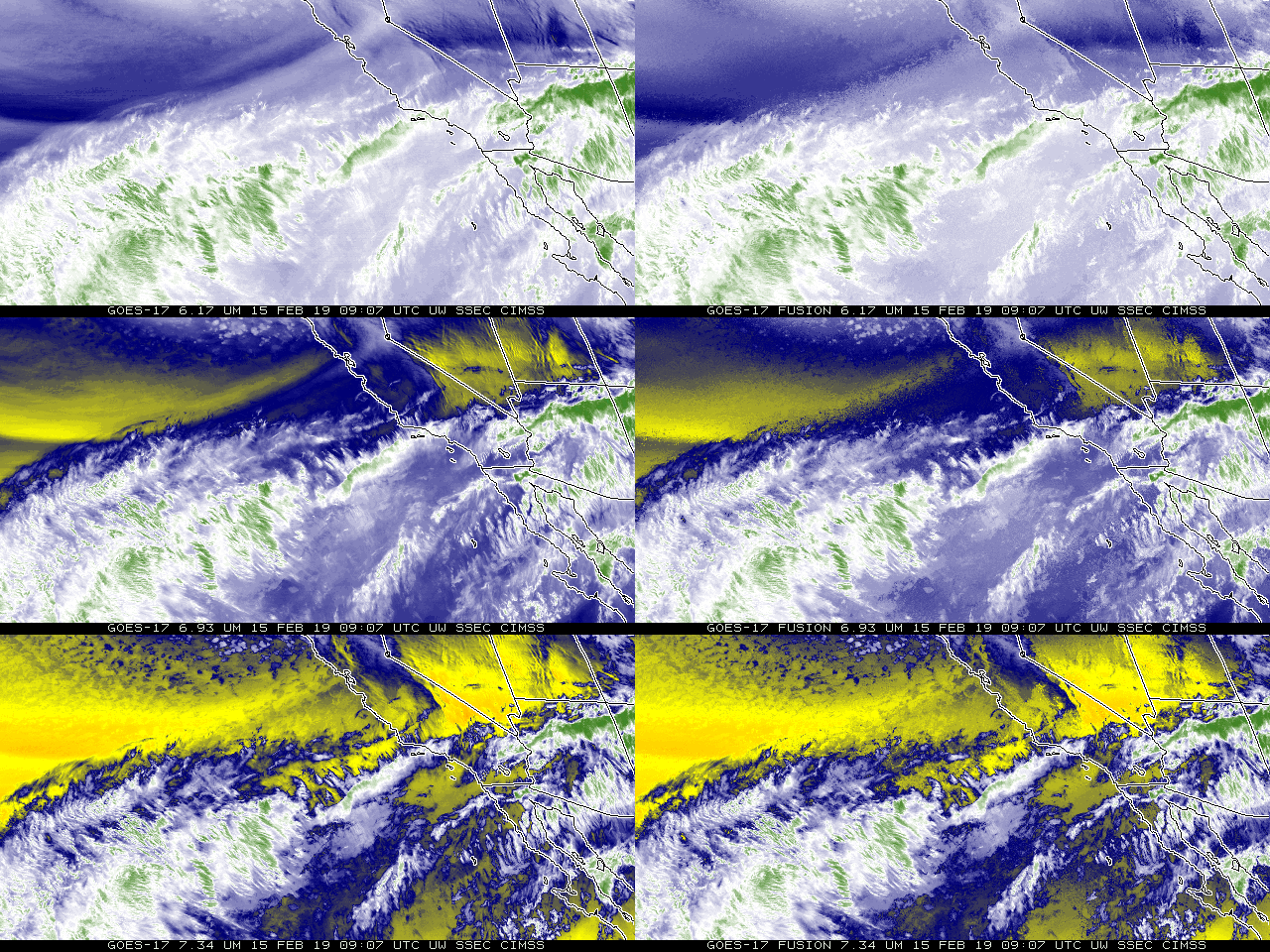GOES-17 Data Fusion: An example, and where to find the data

GOES-17 Water Vapor Imagery. 6.19 µm (top row), 6.95 µm (middle row), 7.34 µm (bottom row); Left Columm: Imagery from the ABI; Right Column: Data Fusion Imagery created using the GOES-17 ABI Band 13 (10.3 µm) Imagery. Animation from 0902 UTC – 1727 UTC. Data Fusion imagery is not computed for the first or last images. Click to play mp4 animation.
The GOES-17 Loop Heat Pipe issue means that certain infrared bands lose data integrity at certain times, times that vary over the course of the year. Late February is a time of year when the impacts on data are very noticeable (This figure — from this blog post — shows other times of the year when the issue is most noticeable). The Data Fusion process that uses GOES-17 ABI Band 13 imagery (relatively unaffected by the LHP issues) can create approximations of the missing imagery. This allows for qualitative views of those missing bands.
The animation above (click here for an animated gif) shows GOES-17 Water Vapor Channels on the left (6.19 µm, 6.95 µm and 7.34 µm) and GOES-17 Data Fusion images on the right. At the beginning of the animation (0902 UTC), Data Fusion is not implemented; it uses information at 0902 to create subsequent imagery, however. In the first few frames of the animation, the impact of the LHP warming are not apparent. By 1007 UTC, however, the GOES-17 Water Vapor Bands are becoming noticeably warmer than the Data Fusion imagery. (An initial signal that LHP issues are starting is a general warming in the imagery). Data dropouts start at 1102 UTC, first at 7.34 µm, then at 6.95 µm and finally at 6.19 µm. By 1202 UTC, data integrity is lost completely, but Data Fusion maintains a signal that allows a user to qualitatively track features in the image. Shortly after 1500 UTC, data starts to reappear, initially mostly at 6.19 µm, then 6.95 µm and finally at 7.34 µm. By 1632 UTC, the PACUS (Pacific/CONUS) image shows data, but it is cooler than the Fused data (Note the cooler cloud top temperatures in all three water vapor bands).
Warmth going into LHP Data Drop-outs and coolness coming out of LHP Data Drop-outs have been documented in this directory tree that compares GOES17 and GOES16 imagery in a region in between the two satellites (a region with similar view angles). The figure below (from here, accessible from this website) shows that GOES-17 brightness temperatures (in red) are warmer than GOES-16 (in blue) before data loss, and cooler than GOES-16 immediately subsequent to data loss.

GOES-17 (red) and GOES-16 (blue) brightness temperatures for an small domain midway between the two sub-satellite points. The GOES-17 6.19 Image at 1552 UTC is also shown (Click to enlarge).
Fusion Data (in the form of netCDF files written comforming to mission standards; the netCDF files are readable by SIFT and McIDAS-V, for example) are available via ADDE from the SSEC Data Center. Send an email here for more information. Imagery is also available at the SSEC Data Center via the geo browser.

